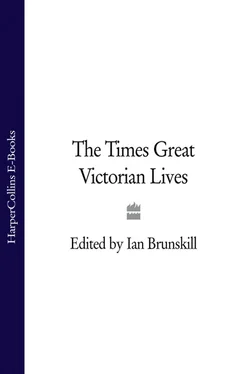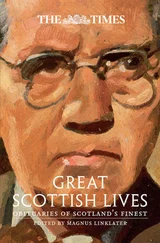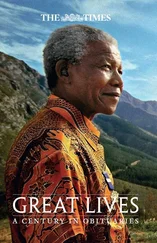Although we cannot travel quite so rapidly in our inferences as Dr. Beke, we are bound to record the fact that Dr. Livingstone claims to have found that ‘the chief sources of the Nile arise between 11 deg. and 12 deg. of south latitude, or nearly in the position assigned to them by Ptolemy.’ This may or may not be the case; for time alone will show us whether this mystery has been actually solved, or whether we are still bound to say, as Sir R. Murchison, said in 1865,–‘We hope at the hands of Dr. Livingstone for a solution of the problem of the true watershed of that unexplored country far to the south of the huge water-basins which, we know, contribute to feed the Nile, the Victoria Nyanza of Speke and Grant, and the Albert Nyanza of Baker.’
During the last year or two our news of Dr. Livingstone has been but scanty, though from time to time communications – some alarming and others, again, reassuring-have reached us from himself or from other African Consuls, officially through the Foreign Office and privately through Sir Roderick Murchison. It will be remembered, more especially, that in the Spring of 1867, a letter from Dr. Kirk, dated Zanzibar, December 20, 1866, was received by Sir R. Murchison and Mr. Bates, giving an apparently circumstantial account of Livingstone’s death by an attack of a band of Matites, some miles to the west of Luke Nyassa. The news rested mainly upon the testimony of some Johanna men, who declared that they had with difficulty escaped the same fate; and for some days half London believed the sad story to be true; but Sir Roderick Murchison, with a keen insight which almost amounted to intuition, refused to believe the evidence on which the tale was based and gradually the world came round and followed suit. The story, as told in the Times of India, March 13, 1867, ran as follows:-
‘It would appear that Dr. Livingstone had crossed Lake Nyassa about the middle of September last, and had advanced a few stages beyond its western shores, when he encountered a horde of savages of the Matite tribe. He was marching, as usual, ahead of his party, having nine or ten personal attendants, principally boys from Nassick, immediately behind him. The savages are said to have set upon them without any provocation and with very little warning. Dr. Living-stone’s men fired, and before the smoke of their muskets had cleared away their leader had fallen beneath the stroke of a battle axe, and his men speedily shared the same fate. Moosa who witnessed the encounter and the death-blow of his master from behind a neighbouring tree, immediately retreated and meeting the rest of the party they fled into the deep forest, and eventually made their way back to Lake Nyassa, whence they returned to the coast with a caravan. When the news of Dr. Livingstone’s sad death reached Zanzibar, the English and other European Consuls lowered their flags, an example which was followed by all the ships in the harbour, as well as by the Sultan. It may be worth while to remark that Dr. Livingstone himselfhad a strong presentiment that he would never return from the expedition which has terminated thus disastrously; and this presentiment he frequently expressed to the officers of Her Majesty’s ship Penguin, who were the last Europeans he sawbefore starting for the interior.’
It will be within the memory of our readers also that in 1867 an expedition was sent out by the British Government, in concert with the Geographical Society, under Mr. E. D. Young, R. N., and Mr. H Faulkner, in order to ascertain the fate, and, if still alive, the position of Dr. Livingstone. The result of this expedition was that they found sufficient traces of his recent presence at Mapunda’s and Marenga’s towns on the Lake Nyassa, to negative entirely the melancholy rumour of his murder, by showing that these Johanna men had deserted him while still pursuing his travels, and that, consequently, he was alive when he and they parted company. It was in this westward journey that he was said to have been killed in the autumn of the year 1868; but the story as soon as it reached London was discredited, both by Sir R. Murchison and by the city merchants, as inconsistent with the known dates of his movements, and afterwards happily proved to be false.
In July, 1869, Dr. Livingstone resolved to strike westwards from his head-quarters at Ujiji, on the Tanganyika Lake, in order to trace out a series of lakes which lay in that direction, and which, he hoped, would turn out eventually to be the sources of the Nile. If that, however, should prove not to be the case, it would be something, he felt, to ascertain for certain that they were the head waters of the Congo; and, in the latter case, he would probably have followed the course of the Congo, and have turned up, sooner or later, on the Western Coast of Africa. But this idea he appears to have abandoned after having penetrated as far west as Bainbarro and Lake Kamolondo, and stopping short at Bagenya about four degrees west from his starting point. At all events, from this point he returned, and which, in the winter of 1870-71, he was found by Mr. Stanley, he was once more in the neighbourhood of his old haunts, still bent on the discovery of certain ‘fountains on the hills,’ which he trusted to be able to prove to be the veritable springs of the Nile, and to gain the glory of being alone their discoverer – to use his own emphatic words, ‘So that no one may come after and cut me out with a fresh batch of sources.’
During the last two years or so, if we except the sudden light thrown upon his career by the episode of Mr. Stanley’s successful search after him, we have been kept rather in the dark as to the actual movements of Dr. Livingstone. Mr. Stanley’s narrative of his discovery of the Doctor in the neighbourhood of Ujiji is in the hands of every well-informed Englishman, and his journey in company with him round the northern shores of Lake Tanganyika (with some hint of a possible modification of his opinion as to the connexion between that sea and the Nile) was recorded in the address delivered by Sir Henry Rawlinson, the President of the Geographical Society, last summer. On that occasion the President remarked:-
‘Our knowledge of Livingstone’s present whereabouts is not very definite. He appears to have been so thoroughly impressed with a belief or the identity of his triple Lunlaba with the Nile that, in spite of earnest longings to revisit his native land, he could not persuade himself to leave Africa until he had fairly traced to their sources in the southern mountains the western branches of the great river that he had explored in Manyema. Awaiting accordingly, at Unyanyembe the arrival of stores and supplies which were partly furnished by Mr. Stanley, and partly by our own First Relief Expedition, no sooner had they arrived than he started in September last (1872) for the further end of Tanganyika, intending from that point to visit a certain mound in about 11 deg. South latitude, from which the Lufira and Lulua were said to flow to the north, and the Leeambye and Kafué to the south. Hence he proposed to return northwards to the copper mines of Katanga, in the Koné mountains, of which he had heard such an extraordinary account. Later still he was bent on visiting Lake Lincoln, and following the river which flowed out of it, and which, under the name of the Loeki or Lomanae, joined the Lualaba a little further down, to the great unexplored lake at the Equator. His expectation seems to have been that this lake communicated with the Bahr-el-Gazal, and that he might thus either return home by the route of the Nile or retrace his steps to Ujiji but if, as we hope will be the case, either the one or the other of the expeditions which are now penetrating into the interior from the East and West Coast respectively should succeed in opening communication with him before he is called on to decide on the line of his return journey from the Equatorial lake, it is far from probable that, with the new light thus afforded him, he will continue his journey along the Congo, and emerge from the interior on the Western Coast.’
Читать дальше












